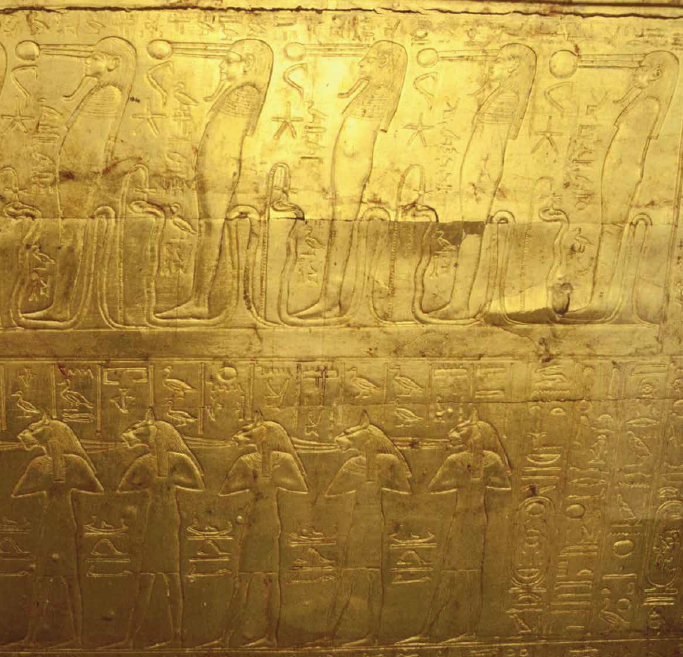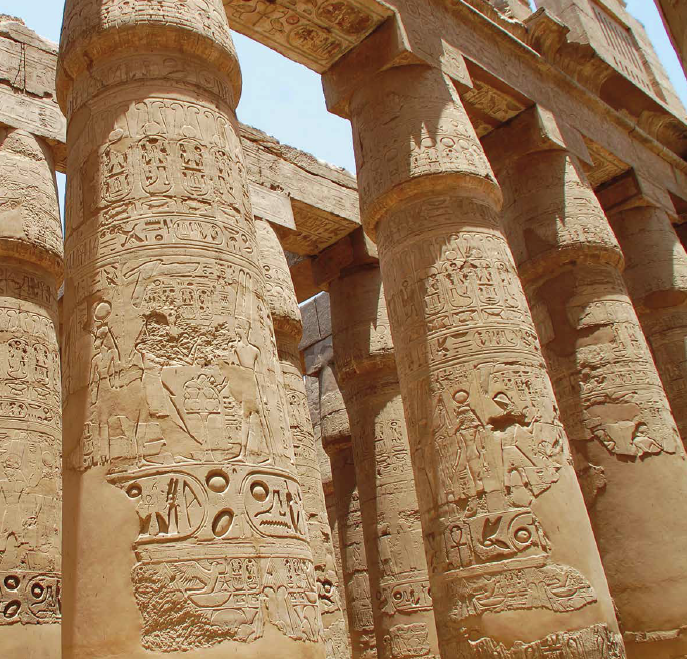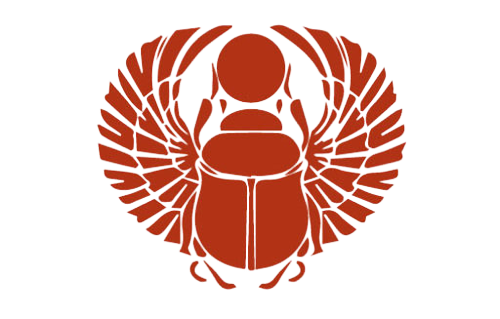The most important book of the funerary culture of the ancient Egyptians is the Book of the Coming Forth by Day, as the inhabitants of the Nile Valley used to call it.
It contains more than 190 litanies or formulas. Their purpose was to guide the deceased to successfully reach the kingdom of Osiris. A place that in the geography of the afterlife is called Rostau.
They are independent of each other with a common denominator: they don't follow a chronological or spatial origin. They all begin in the same way: “Formula to..." Followed by the corresponding magical text that the deceased should speak out loud. In order to pass through a particular door, cross a dangerous lake of fire, guess the name of the guardian of certain places or discover the intricacies of a complicated labyrinth.

The enigmatic Book of the Beyond. Chapel of Tutankhamun.
If Egyptians write something, it came to life.
For the ancient Egyptians, it was essential that everything was perfectly explained and illustrated. This confered to it its magical nature. If they decided to write something, automatically, it came to life, it became real. That’s why in many tombs we find the name of the deceased written ad nauseam.
Up to now, hundreds of examples of the Book of the Dead have survived. Its main format is papyrus. But we find examples in other formats, such as the wood of the sarcophagi.

Karnak Temple in Luxor.
What was the purpose of the Book of the Dead?
The main purpose of the Book of the Dead was clear: the protection and provisioning of the deceased in the journey through the tortuous world of the Afterlife.
The concept Amduat is the most similar idea to our Afterlife. Ancient Egyptians divided the night into 12 hours. Also divided into different spaces and regions.
Last part, was the Amenti world, which was the generic name of West and the place where all the deceased were destined. Amenti is a specific part of the Amduat the Fifth Hour of the Night, but its name became popular as a synonym for the Afterlife.
